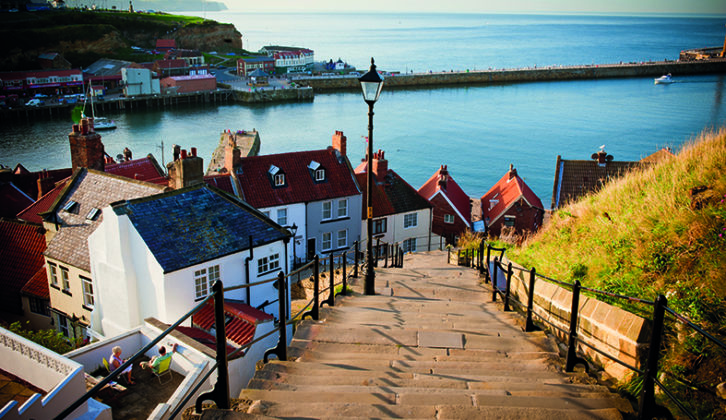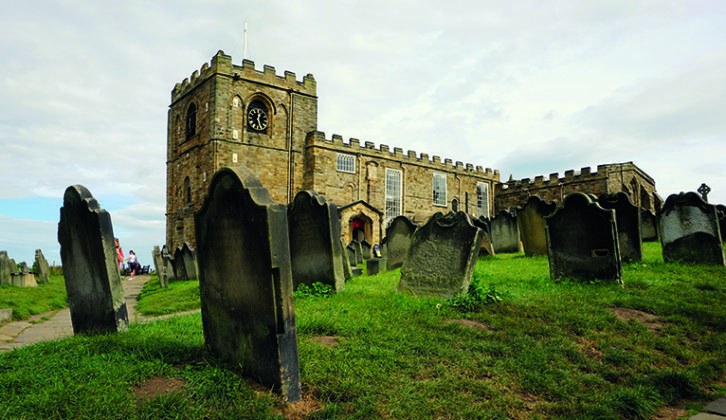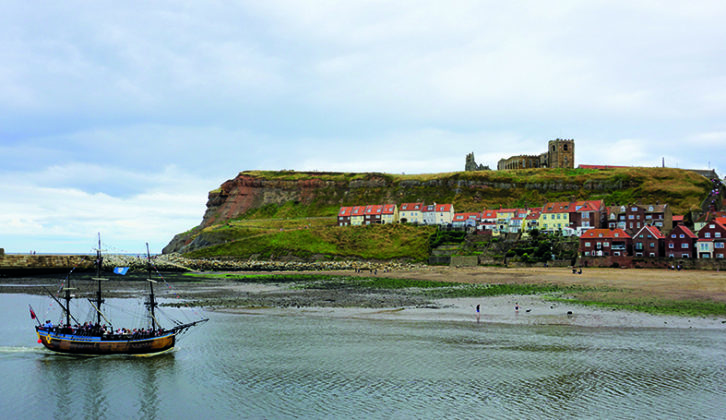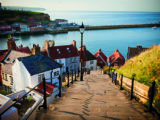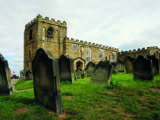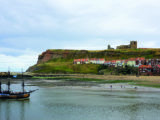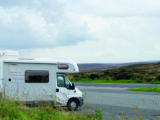There’s the right way, the wrong way, and then there’s the Whitby way. E very visitor to Whitby will hear this saying oft repeated throughout the town and no, it doesn’t refer to a walking path as I first thought, something akin to the Cumbria Way or the South West Coast Path.
What it in fact refers to is something I began to feel and relate to, the more time I spent in the town and among its people.
Rather than try to explain, the best way to illustrate the Whitby Way is with an example. Why have one St Hilda’s Church when you can have two, one at each end of the same street (and by the way, one of them houses a colony of bats which, according to locals, inspired Bram Stoker to turn Dracula into a bat to allow him in through Mina’s bedroom window)?
Or there’s the street with three names. When businessman and ‘railway king’ George Hudson employed a team of builders to construct streets around Whitby, he agreed to pay them per street. This led one group of entrepreneurial workers to give the same street a different name on each side, and a further name at the opposite end, thus tripling their income!
I learnt these and many other fascinating facts, mixed in with a few spoils and legends, during a Ghost Walk that we took on a drizzly evening midway through a recent stay in Whitby.
Heading for the Moors
We had arrived the previous day, having broken our journey from Buckinghamshire with a meal at the Carpenters Arms pub in Dale Abbey, just outside Nottingham.
This friendly pub was a convenient halfway rest stop on our way to a week in Whitby and the North Yorkshire Moors.
The village of Dale Abbey itself, although only small, has its own interesting history. It is named for what are now the sparse remains of an abbey founded around 1200 to honour a hermit who carved a dwelling and small chapel from the local rock face, to live a life of solitude and prayer after receiving a vision of the Virgin Mary.
We spent an enjoyable hour stretching our legs in the woods and visiting the hermit’s cave before continuing our journey north.
We arrived to find this charmingly quirky town bathed in unexpectedly warm sunshine, and quickly settled onto our pitch at Sandfield House Farm Holiday Park, at Sandsend, which is about three miles outside Whitby.
From this large site, a pleasant 40-minute walk along the promenade, following sea and sand past colourful beach huts, takes you into Whitby.
There is also a more direct route along the road, which avoids the steep climb from the promenade (mind you, it is nigh-on impossible to avoid the odd steep lane around here).
A taxi ride back to the campsite after a day of exploring or an evening out takes only a few minutes and is reasonably priced (we paid £6). There is also a half-hourly bus service that stops just a few yards from the site entrance, but do check the times of the last returning buses.
We decided to save exploring Whitby until the following day, when we could do it proper justice after a good night’s sleep. Instead, we took a walk along the beach in the opposite direction, so that we could check out the village of Sandsend before occupying our first evening with a relaxing meal at the White House Inn, a pleasant hostel just a few minutes’ walk from the campsite.
Strolling on the sands

The next day we took that leisurely stroll into town, exploring the beach and scouting for fossils along the way, before finding out more about Whitby’s long maritime history.
This we did with a visit to the informative Memorial Museum, based in the house where famed explorer Captain James Cook served his apprenticeship and learnt his seafaring skills.
At Whitby Museum, we found one of the town’s more gruesome exhibits – the Hand of Glory. Legend has it that this mummified hand of a hanged murderer possessed magical powers to aid thieves, by putting the inhabitants of any household to sleep. It was also said to be able to pick any lock.
This whetted our appetite for local myths and legends – that evening, as the weather turned to rain, we found ourselves embarking on a Ghost Walk in the town. We strolled the cobbled streets, huddling in the drizzle as we listened to our guide weaving tales of history and haunting.
We stood outside the old Bakehouse on Grape Lane (known in Victorian times as Grope Lane – I’ll leave you to work out why), where a young woman named Mary Clarke went to put her father’s dinner in the oven, but leant too far over the flame and set her long hair on fire. Mary ran down the street screaming, “My hair, my beautiful hair!” before perishing in the flames. Walk here today at dusk and you might see the flames and hear her screams. But beware remaining after dark, when the Barghest, or Devil Hound, prowls the streets – woe betide anyone seeing his red-eyed stare and hearing his deathly growl!
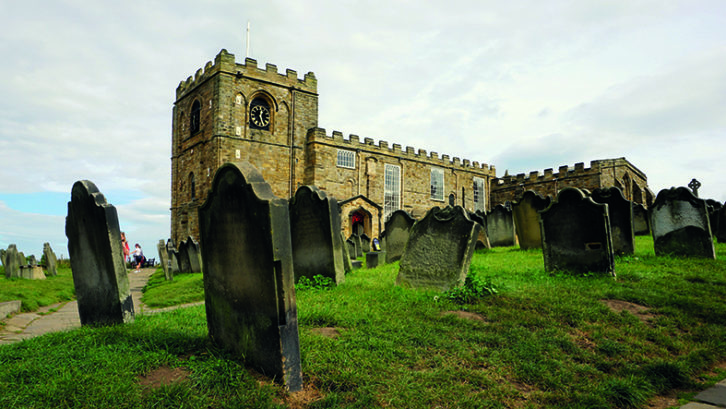
As the mist rolls in from the sea and rises to St Mary’s churchyard on the headland, as it was this evening ,it brings forth the Barguest Coach, pulled by ghostly horses and driven by the skeletons of sailors long gone. They gather the sounds nf nearly deceased seafarers and, as the sun sets, ride the coach off the cliff to a watery grave.
This and other tales of the many ghosts said to inhabit the abbey and St Mary’s were almost enough to deter me from visiting there.
But we couldn’t come to Whitby and not climb the 199 steps to the church and abbey for which the town is famous – keeping a wary eye out for spectral horses, phantom bats, and fellow visitors with unusually long incisors, of course!
The abbey was founded around 657, although by 1066, it was largely abandoned. Rebuilt in the 13th century as a Benedictine house, it is rich in history, folklore and legend.
By the time Bram Stoker visited in 1890, the abbey was a dramatic ruin. Combine this with the weatherbeaten gravestones in St Mary’s churchyard, and it is easy to understand Stoker’s inspiration for his vampiric tale, to feel the eerie atmosphere and imagine the bats swooping down as the full moon turns the sky blood-red and the screams of the unwary echo around the town….
The newly revamped (excuse the pun) museum and visitor centre in the old mansion has plenty of information on the abbey. It even boasts an original copy of Dracula, signed by Bram Stoker.
Fish & chips for lunch
After lunch at the award-winning Papa’s Fish & Chips, back at sea level we spent a happy few hours wandering the quirky shops and alleys.
We were, though, still watchful as we walked through the screaming tunnel at the bottom of West Cliff (aka Dracula’s Tunnel), having been warned on our Ghost Walk about the presence of spectral hands and the sounds of screaming often reported by locals once dusk descends.
The town was very busy with weekend visitors, so we booked a meal for the following evening at the White Horse & Griffin, the first coaching inn in Whitby to serve the route to London.
We then retired to our pitch to cook up our own feast of chicken casserole, with lots of garlic to help deter any vampires!
After a night of drizzly rain, we awoke to another warm, sunny day. A quick check for hound-like paw prints or long-fingernailed scratches (thankfully finding neither), and we decided to make the most of the weather with a visit to the village of Goathland and a walk on the moors.
You can take the North Yorkshire Moors Railway heritage steam train from Whitby to Pickering, passing through Goathland and Grosmont, although we had decided to drive. Goathland Station provided the setting for Hogsmeade in the first Harry Potter film, and featured in TV series Heartbeat, so there are plenty of themed souvenirs.
We, though, were here to walk part of the Rail Trail, following the old railway line. This gentle stroll on a well-made path passes Birch Hall Inn, one of the smallest pubs I’ve ever encountered, as well as the Mallyan Spout waterfall.
Ghostly approval
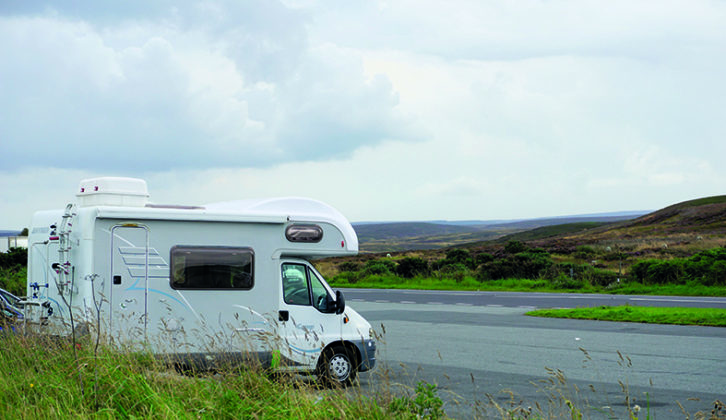
Returning to Whitby, we enjoyed seafood and stake (sorry, steak!) that evening at the White Horse & Griffin, after gaining the approval of the ghostly former landlady, Mrs Bowler.
In life, she was said to like or dislike customers on sight (usually the latter) before her untimely demise, when she bled to death after falling down the steps outside the inn and cracking her head.
As recently as the 1980s, it was said nobody could spend a night at the then hotel without feeling her presence. Happily, our meal was undisturbed.
Next day, we decided to set out for the moors again, via the Hole of Horcum to Helmsley and its medieval castle, before returning along the western edge of the moor.
The Hole of Horcum is a spectacular natural amphitheatre, half a mile wide, just a half-hour drive from Whitby. Legend tells (yes, more beastly tales) that a giant named Wade had an argument with his wife, during which he scooped up a handful of earth to throw at her, causing the huge fissure in the landscape.
He missed, by the way, the soil landing nearby and creating Blakey Topping, a hill complete with a few standing stones. Experts are divided as to its actual origin, but it is likely to have been a site of worship for early inhabitants of the moors. This is a good area for walking and well worth a visit.
All around there is evidence of Wade’s handiwork and as we wandered, we were very careful not to disturb him – we had enough with vampires and severed hands, no need to add a giant to the mix!
Castle and manor house
Next stop was Helmsley Castle, these days owned by English Heritage. These impressive remains were once a medieval castle, before being turned into an imposing manor house, initially held by the Royalists during the Civil War.
It eventually surrendered to Parliamentary forces, who destroyed the outer walls and the East Tower, sending out a clear message of the might of the conquering troops and ensuring the castle could no longer by used against them.
Helmsley is a pretty little market town with an array of shops and cafés, perfect for refuelling. It also has a microbrewery, but (quite unusually!) we resisted the temptation to check this out.
Continuing our trip around the edge of the moor, we drove to Roseberry Topping, known locally as the Yorkshire Matterhorn. One look and we decided against trying to scale it, having already worked up an appetite for dinner Instead we returned to base and a meal in Whitby.
We dined at Khamthai Restaurant and visited a couple of the many pubs and bars Whitby has to offer, enjoying cocktails at Macy Brown’s.
Smuggling and fishing
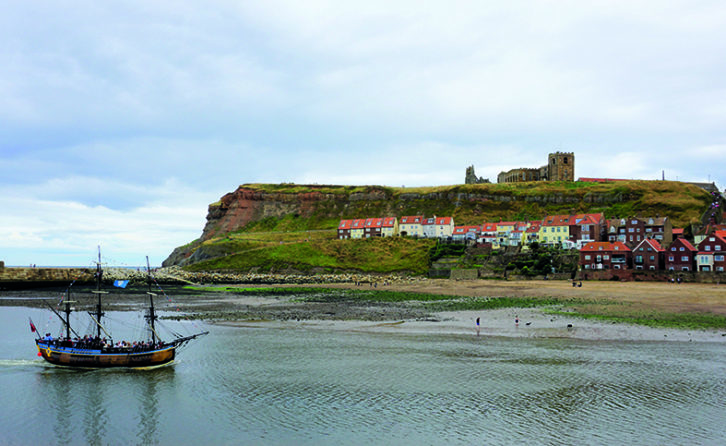
Our final day was spent a bit further south, on the heritage coast, exploring the picturesque village of Robin Hood’s Bay, with its streets and cottages tumbling down to the shore. The less mobile might find the walk to the sea a bit taxing.
The original claim to fame of this fishing village was as a smuggling hideout, and you can still feel its air of mystery and imagine all those bolt-holes and secret passageways, where the smugglers hid as the local women poured boiling water over the customs inspectors from their windows.
Today it is a popular destination and the main streets, pretty harbour, gift shops and pubs were busy during our visit; although we did manage to find quieter streets to play at hiding contraband gin before indulging in more fish & chips – we, we were on the coast, after all!
Robin Hood’s Bay is also a great spot for fossil hunting and rock pooling on the beach.
On our final night at Sandfield House, a glass or two of Whitby gin promised a good night’s sleep, untroubled by skeletal coach drivers or fanged bats. Wait, though – there’s a strange tapping at the window…
TOUR ESSENTIALS
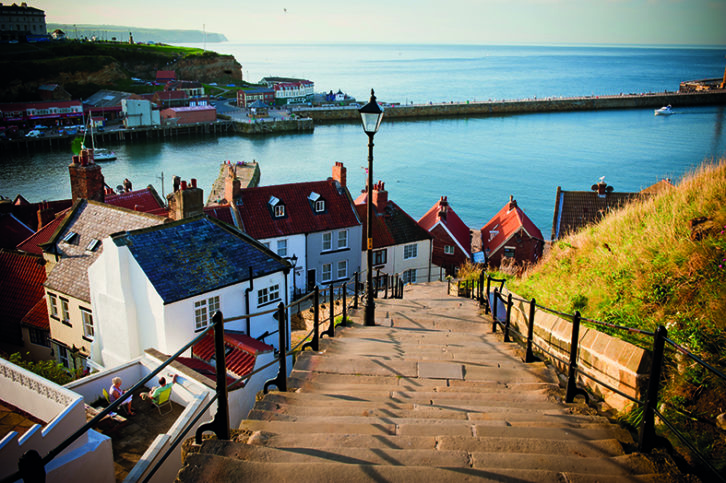
When to go
Whitby is an all-year-round destination, which can get crowded in summer. The moors are probably best explored in the warmer, drier months.
Where we stayed

Sandfield House Farm Holiday Park
- Sandsend, YO21 3SR
- Web sandfieldhousefarm.co.uk
- Open 1 March to 31 October
- Charges (pitch+2+hook-up) £30, hardstanding
If you’re planning a winter visit, you could try:
York House Caravan Park
- Whitby, YO22 4LW
- Web yorkhousecaravanpark.co.uk
- Open all year
- Charges (pitch+2+hook-up) £17-£30, hardstanding
Food and drink
Fish and chip outlets abound, and there are lots of pubs
Find out more
- Whitby Abbey
- Captain Cook Memorial Museum
- Whitby Museum
- Goathland Station
- Helmsley Castle
- North York Moors National Park
- Robin Hood’s Bay
If you liked this… READ THESE:
North East England: Practical Motorhome Travel Guide
10 top sites for history lovers
Your Tour: Exploring the North York Moors
Best motorhome 2022: our top picks
If you’ve enjoyed reading this article, why not get the latest news, reviews and features delivered direct to your door or inbox every month. Take advantage of our brilliant Practical Motorhome magazine SUBSCRIBERS’ OFFER and SIGN UP TO OUR NEWSLETTER for regular weekly updates on all things motorhome related.
That evening, as the weather turned to rain, we found ourselves embarking on a Ghost Walk in the town. We strolled the cobbled streets, huddling in the drizzle as we listened to our guide weaving tales of history and haunting
